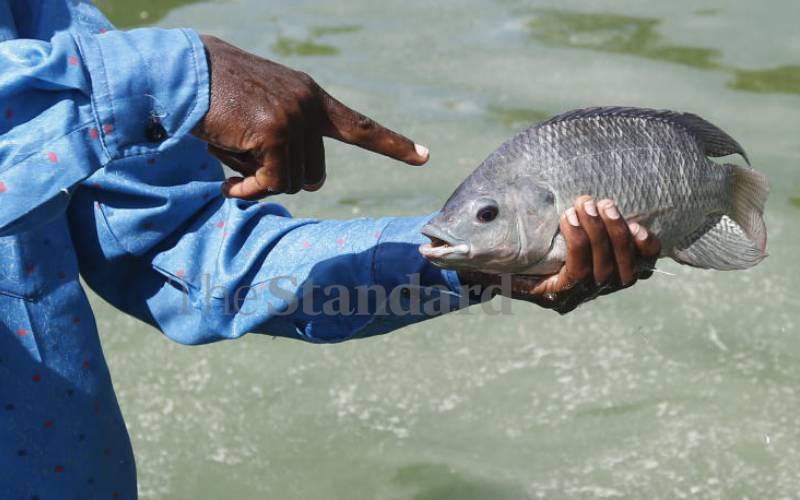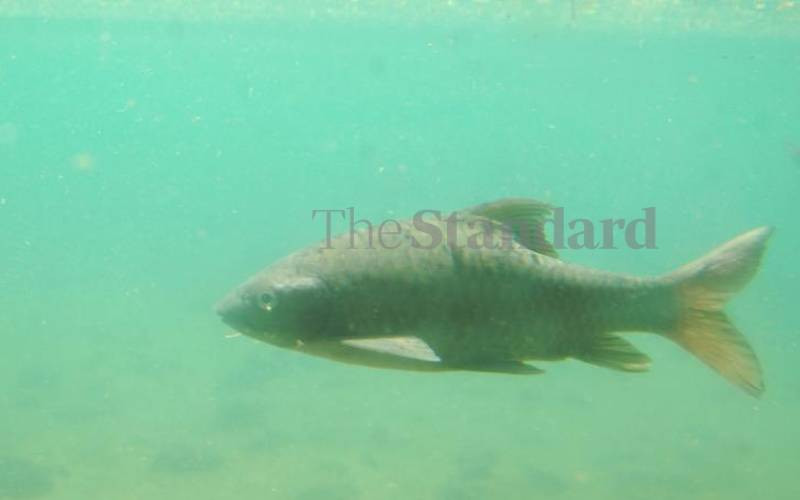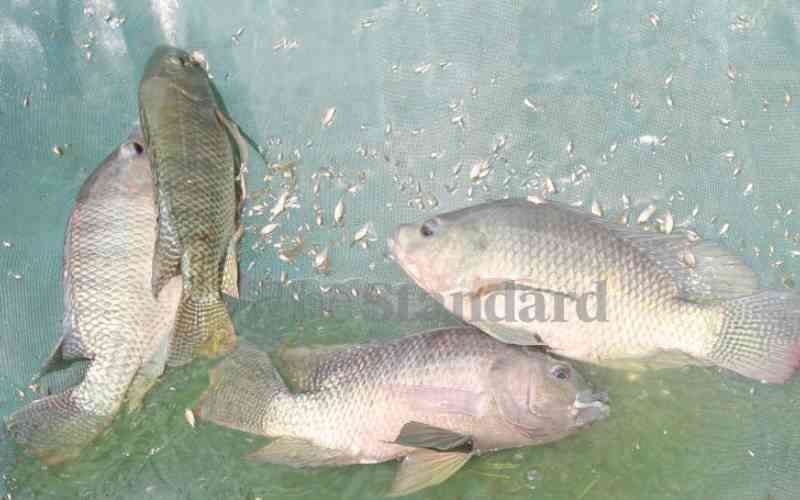
A fish species that was introduced to restock Lake Baringo is now posing a threat to the existence of a native fish species only found in the lake.
Mabled lungfish were introduced to the lake in 1975 to restock the lake despite the lack of environmental assessment of its potential impacts. It now endangers the existence of Baringo Tilapia.
In a study released in November 2020, scientists said populations of the once-vibrant sub-species of Nile tilapia are collapsing as a result of a number of factors, including being preyed on by the marbled lungfish.
“The once-vibrant Baringo tilapia that flourished before the small town of Kampi ya Samaki was transformed into a beehive of activity on the shores of the lake is no longer sustainable,” the study said.
According to the research, Baringo tilapia contributed to 80 per cent of the landed total catch up to the year 2002, averaging over 600 tonnes annually, but the trend had declined to about 12 tons annually by the year 2006.
Currently, the marbled lungfish that was introduced is the major fishery, representing more than 75 per cent of the total fish landings, with Baringo tilapia landing being just one per cent. The research traced the introduction of marbled lungfish to Lake Baringo after the Nakuru Agricultural Society of Kenya (ASK) show in 1975 where unidentified fisheries officers took three fishes - two females and a male from the exhibition and stocked the waters of the lake.
“Although there are no conclusive studies indicating this fish is invasive, it is a predator fish, and data highlight that it preyed on Baringo tilapia on many occasions.

The research also highlights the decline of aquatic plants growing in waters and on the shores that once provided refuge to the fish whenever predators are in pursuit.
“...the chances are great that the fish had no areas in which to hide from the predator, this being a possible reason for its decline.”
But while marbled lungfish is highlighted as one of the contributors to the decline of Baringo tilapia, their abundance in the lake is noted to have made the lake fisheries commercially viable, sustaining a growing number of fishermen and fish mongers each day.
Marbled lungfish catch currently constitutes about 90 per cent of the total fish landing at the beaches. This situation, however, researchers note, might not last for long because marbled lungfish cannot withstand the high exploitation it is currently experiencing.
“Nevertheless, the continuing decline in the Baringo tilapia fishery is becoming increasingly worrisome,” the researchers say.
Lack of enough food for Baringo tilapia is linked to pollution and siltation that results in interference with light penetration into the water, preventing the manufacture of their food. The fish is also said to rely on visual sight to locate food, which becomes tough when the lake is not clear. “This factor could be a major reason for the continuing decline, and now a likelihood of collapse of the Baringo tilapia fishery,” the study said.
Besides predation, Baringo tilapia also face challenges stemming from over-fishing. With the increasing number of fishermen in Lake Baringo, an upsurge in fish catches and potential fish over-exploitation has been recorded.
Baringo tilapia populations have also suffered from damming of main rivers draining into lakes including Molo, Endau and Perkerra rivers during the dry season. This, the researchers say, has affected Baringo tilapia breeding areas as water on the shores shrinks, leading to possible decline.
However, the research further notes that moving raging waters once released from overflowing dams along the rivers during sporadic heavy rain events cause soil erosion, siltation and sedimentation in the lake. This blocks the underground seepage through which the lake loses its waters making the water body saline.

“It has also led to filling the lake through continuous piling, thereby causing the lake to flood unnecessarily and possibly destroying the breeding areas.”
Reports on the Baringo tilapia fishery decline were documented as early as the 1990s and by 2010, the Kenya Marine and Fisheries Research Institute (KMFRI) embarked on studies earmarked for conservation to map breeding areas.
“Eight areas were identified as possible breeding and conservation areas. To date, however, only three of the identified and mapped areas have been demarcated. The remaining six areas remain as unrestricted fishing grounds by fishermen, another factor that has likely contributed to the likely collapse of the Baringo tilapia fishery.”
The report recommended closed seasons where fishing is put on a halt for a period of time to allow stock recovery. It also called for regulation of damming activities and demarcation of nursery and breeding sites.
“It is evident closed seasons are one of the surest strategies to resuscitate the collapsing numbers,” the study said.
 The Standard Group Plc is a multi-media organization with investments in media platforms spanning newspaper print
operations, television, radio broadcasting, digital and online services. The Standard Group is recognized as a
leading multi-media house in Kenya with a key influence in matters of national and international interest.
The Standard Group Plc is a multi-media organization with investments in media platforms spanning newspaper print
operations, television, radio broadcasting, digital and online services. The Standard Group is recognized as a
leading multi-media house in Kenya with a key influence in matters of national and international interest.











